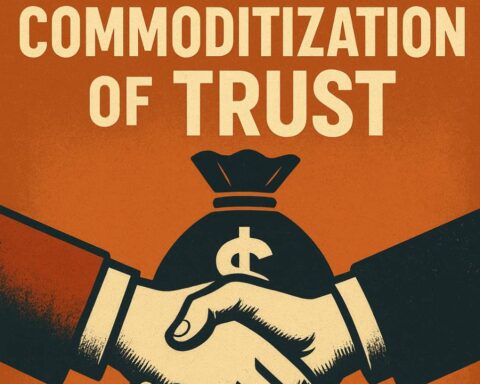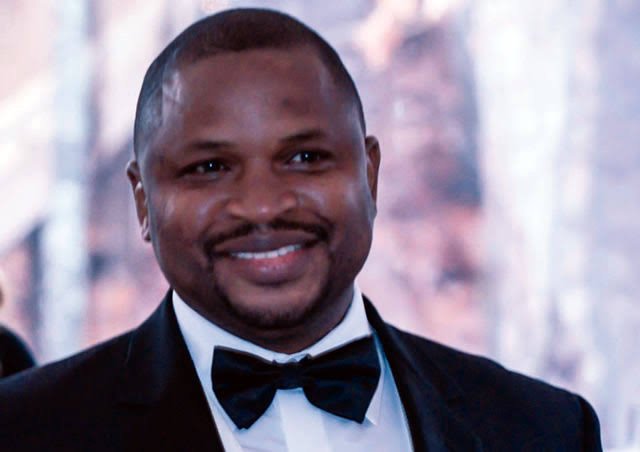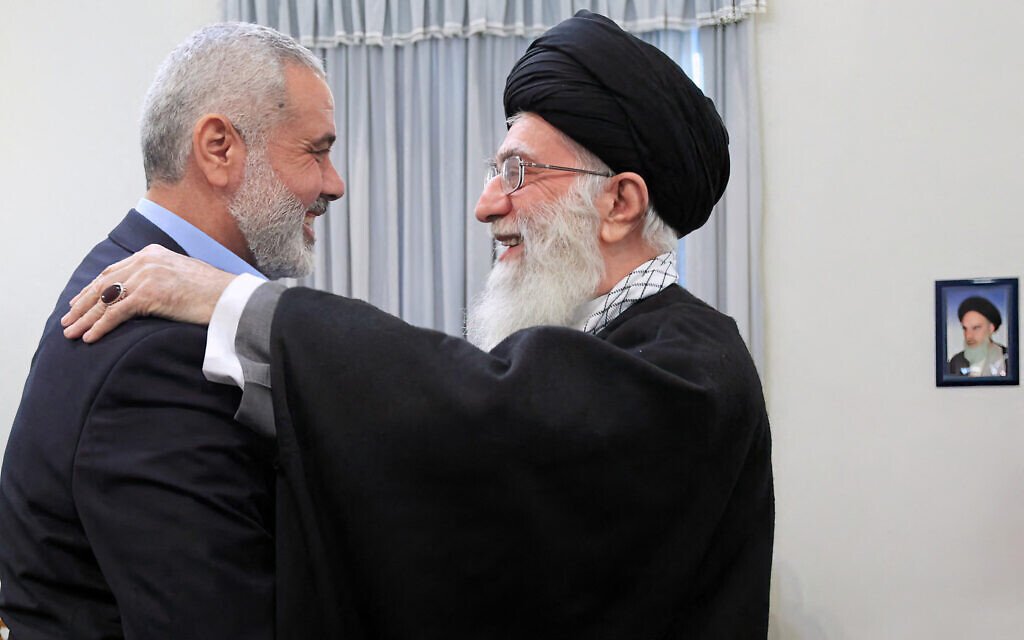By Dr. Charles Obiajulu Ugwu
There is a scene I cannot shake off.
A once-bustling textile factory in Kaduna with its humming looms now silenced, its wide floors colonized by dust and ghosts. The workers, men and women who once clothed the nation, still gather nearby each morning, not to work but to wait. They trade stories about how things used to be, how the government’s neglect or some foreign competitor ruined everything. Many of them haven’t held a real job in years. Yet, curiously, they still show up. As if by showing up, they might summon back the life they lost.

That image of the empty factory filled with the inertia of hope still haunts me till this day because it captures something broader, something deeply human and disturbingly common. Across individuals, families, organizations, and entire nations, people find themselves trapped in the aftermath of events they never planned, wounds they never deserved, and systems they never consciously built. They start out victims of circumstance, but over time, the circumstance becomes home. Pain becomes policy. Survival becomes identity.
This is the silent, enduring phenomenon I call Adaptive Captivity, a condition in which human systems adapt so well to their wounds that they become defined by them.
The Comfort of the Cage
Adaptive Captivity begins innocently. Something happens, an accident, betrayal, policy failure, economic collapse, or national trauma. The response is, at first, instinctive: protect, explain, survive. But slowly, that survival script calcifies. People begin to find meaning, even belonging, in the routines built around their pain. The event that once wounded them becomes the reference point for all future thinking.
Consider Nigeria, a nation that once believed its oil wealth was a blessing, only to become shackled by it. The oil boom of the 1970s birthed an addiction that outlived its euphoria. When global prices crashed, we never fully recovered; we adjusted. We cut corners, politicized scarcity, and learned to glorify endurance as virtue. Today, endurance has become our national theology. The ability to survive dysfunction now passes for strength.
This is how captivity works, it doesn’t need visible chains. It only needs a story convincing enough to make you stay still.
How We Become Stuck
Psychologists once called it inertia, sociologists call it path dependency, and theologians might call it fate. But none of those terms quite capture the quiet cunning of this phenomenon. Adaptive Captivity is not mere stagnation rather it is motion trapped in loops.
An organization that once suffered a data breach builds new protocols for protection, then spends years policing itself into irrelevance. A family that experienced betrayal establishes strict codes of secrecy, then wonders why love no longer flows. A nation that faced colonization replays its victimhood into every new generation, building fresh chains in the name of memory.
The tragedy is that the very tools of adaptation such as memory, ritual, caution, loyalty become the locks of the new prison.
Take the story of a Nigerian family business I once advised. After a major financial loss caused by a trusted cousin, the founder rewired the company’s DNA around suspicion. Every expense required triple signatures; every decision passed through committees. Over time, the family lost not just money but imagination. No one trusted enough to dream. In trying to prevent another betrayal, they built a fortress so secure it kept opportunity out.
This pattern repeats itself everywhere: trauma institutionalized as policy, fear disguised as prudence, and mistrust masquerading as wisdom.
The designs of Entrapment
To understand Adaptive Captivity, one must think systemically. It unfolds through seven layers of entrapment—each one reinforcing the next.
The Event: a shock too complex or painful to fully resolve.
The Anchor: a simple story formed to explain it—often emotionally satisfying, rarely true.
The Ritual: habits, rules, or memorials that keep the story alive.
The Policing: social or institutional forces that punish deviation from the story.
The Structure: bureaucratic or material systems built around the event’s logic.
The Identity: individuals or groups begin to define themselves by the event.
The Entrenchment: any attempt to change the system strengthens the resistance to change.
You see it in communities that still fight old wars long after the battlefield has gone silent. You see it in governments that build more committees to fix problems created by old committees. You see it in people who leave abusive relationships but recreate the same dynamics elsewhere, mistaking familiarity for safety.
Adaptive Captivity is not a failure of intelligence; it is an overachievement of adaptation. We become too good at surviving what hurts us and in that efficiency, we lose the imagination to live differently.
When Survival Becomes the New Disease
If you doubt the scale of this phenomenon, look around.
Everywhere, nations wear their scars as symbols. South Africa’s post-apartheid struggle to build beyond grievance. America’s endless pendulum of racial reckonings that both heal and reopen wounds. Nigeria’s institutionalized distrust born from a civil war most citizens never witnessed but still inherit emotionally.
The longer societies live inside their trauma narratives, the more they organize economies, politics, and education around them. A young Nigerian grows up hearing that corruption is inevitable, that the system is rigged, that nothing truly changes. By adulthood, that fatalism becomes wisdom. The citizen adapts to dysfunction, masters it, and unknowingly passes it on as culture.
This is how civilizations stagnate—not by catastrophe, but by the gradual normalization of damage.
Adaptive Captivity turns survival skills into long-term liabilities. A community that learns to cope with scarcity loses the muscle for abundance. A company that learns to navigate crisis forgets how to innovate without it. A country that learns to “manage” corruption loses the collective outrage needed to end it.
We build rituals around our limitations and call them traditions.
The Economics of Being Stuck
There is, of course, an economy to captivity. Entire industries thrive on the maintenance of dysfunction. Consultants, bureaucrats, aid agencies, and politicians often have more to gain from managing problems than from solving them.
Take Nigeria’s fuel subsidy saga—a textbook case of Adaptive Captivity. For decades, the subsidy was introduced to protect citizens from rising fuel prices. Over time, it became a multi-billion-dollar labyrinth of corruption. Every government that promised to remove it eventually reinstated it, fearing backlash from citizens conditioned to believe cheap fuel was an entitlement. Both the rulers and the ruled found stability in the dysfunction. Everyone complained; no one truly wanted it gone.
This is the cruel beauty of Adaptive Captivity—it makes prisoners and wardens codependent.
At the organizational level, similar patterns exist. Corporations design elaborate performance management systems to fix mediocrity, then spend years maintaining those systems while mediocrity persists. Universities that once championed critical thought become bureaucracies of accreditation, obsessed with compliance over discovery. Religious institutions that began as sanctuaries for conscience evolve into empires of control.
The systems endure because they feed off the very suffering they claim to cure.
The Psychology of Perpetuation
There is a deeper psychological current here—one that runs beneath policy, culture, and leadership. The human mind craves coherence more than truth. We would rather inhabit a consistent story, even if it’s painful, than live in ambiguity. The brain prefers a bad certainty to a good uncertainty.
That is why victims of captivity often defend their cage.
A community that has survived decades of neglect learns to distrust reformers. A civil servant conditioned by decades of dysfunction fears efficiency because it threatens her sense of control. An abused individual rationalizes their abuser because leaving would unravel the entire narrative of who they are.
When captivity becomes identity, freedom feels like betrayal.
This is why many well-intentioned reforms fail. They attack symptoms but not the story. They try to fix behavior without addressing belonging. They do not understand that systems resist change not because they are irrational, but because they are coherent—morally, emotionally, and socially coherent to those inside.
To break free, one must first break the story.
Echoes in Leadership and Nationhood
Leadership, at its core, is narrative architecture—the ability to design meaning that mobilizes. Yet most leadership failures today stem not from incompetence but from narrative captivity. Leaders become curators of inherited dysfunctions, custodians of unexamined stories.
In Nigeria, for instance, every incoming administration promises “a new dawn,” but quickly becomes entangled in the same power networks it inherited. The faces change; the script remains. Our politics functions like an ancient ritual—loud, repetitive, and self-reinforcing. Each new regime defines itself not by new creation but by opposition to the last one. Governance becomes performance, and reform becomes rhetoric.
But Nigeria is no anomaly. The global order is riddled with sophisticated captives—governments that confuse motion with progress, corporations that chase quarterly profits while hemorrhaging long-term purpose, and citizens who have learned to livestream outrage instead of organizing renewal.
We are all, at varying degrees, participants in a civilizational captivity—adapting beautifully to the very systems that exhaust us.
The Quiet Tyranny of Normal
Perhaps the most insidious feature of Adaptive Captivity is normalization. When something lasts long enough, people stop seeing it as abnormal. Dysfunction becomes wallpaper. We learn to navigate potholes instead of demanding roads. We bribe our way through processes instead of demanding reform. We treat chaos as an aesthetic, a cultural signature.
Every nation has its version.
In America, it’s the normalization of gun violence and political gridlock.
In Japan, the quiet epidemic of overwork and loneliness.
In Nigeria, the ritual of outrage without consequence.
In each case, people adapt—not happily, but habitually.
The danger of adaptation is that it feels like resilience. And resilience, when unexamined, can become complicity.
When Systems Lose Their Curiosity
What makes captivity so hard to dismantle is that it kills curiosity the capacity to imagine alternatives. Curiosity is a threat to any closed system. It asks “why” where the culture insists on “how.” It destabilizes consensus.
I once facilitated a workshop for mid-level managers in a state agency. I asked them what would happen if the agency stopped existing for a month. Silence. Then one brave soul said, “Nothing. People will adjust.” The room laughed, but uneasily. The laughter was a confession they knew the truth. Their organization had become a ritual, not a necessity.
When systems lose curiosity, they replace creativity with compliance. They stop asking whether their mission still matters. That is the final stage of captivity the point where even the memory of freedom feels unnecessary.
The Mirror We Avoid
Every society eventually builds museums for its past mistakes—slavery, genocide, corruption. Yet the more sophisticated prisons are not made of steel or ideology; they are woven into language, habits, and self-concept. The hardest thing to reform is what we have learned to rationalize. Perhaps that is why revolutions often fail. They overthrow structures but leave the inner architecture intact. The colonized mind persists inside the liberated nation. The corporate culture of fear outlives the old CEO. The citizen who demands reform still cheats the system because “everyone does it.”
Freedom without internal re-design to fit is only rearranged captivity.
The Hard Question
So, what do we do with this knowledge?
If survival can itself become a prison, if resilience can morph into resignation, if adaptation can harden into captivity then what hope remains?
Perhaps the answer lies not in grand reforms or sweeping manifestos but in a subtler, more human rebellion: the refusal to normalize damage.
The courage to ask, even after decades of endurance, “Why must it be this way?”
To see that the opposite of captivity is not freedom rather it is awareness.
Because once you name the trap, you weaken its spell.
The Unfinished Room
I return, in thought, to that empty Kaduna factory. The workers still gather. They still talk. But every so often, one of them starts a small tailoring shop nearby repurposing the old dream in a new form. Their courage is quiet, almost invisible, but it matters. Because every act of honest creation is an act of defiance against captivity.
We may never escape all our traps, but we can choose which ones deserve our loyalty.
And perhaps that is the deeper project of human progress—to build systems that learn to outgrow their own defenses, to craft identities that do not worship their wounds, to lead not by nostalgia but by renewal.
The tragedy is not that we fall into captivity. The tragedy is that we learn to live there—and call it home.
About the Author
Dr. Charles Obiajulu Ugwu is a Management Consultant, Adaptability Thought Leader, and Regenerative Systems Expert whose work explores the intersection of leadership, cognition, and institutional renewal.


























